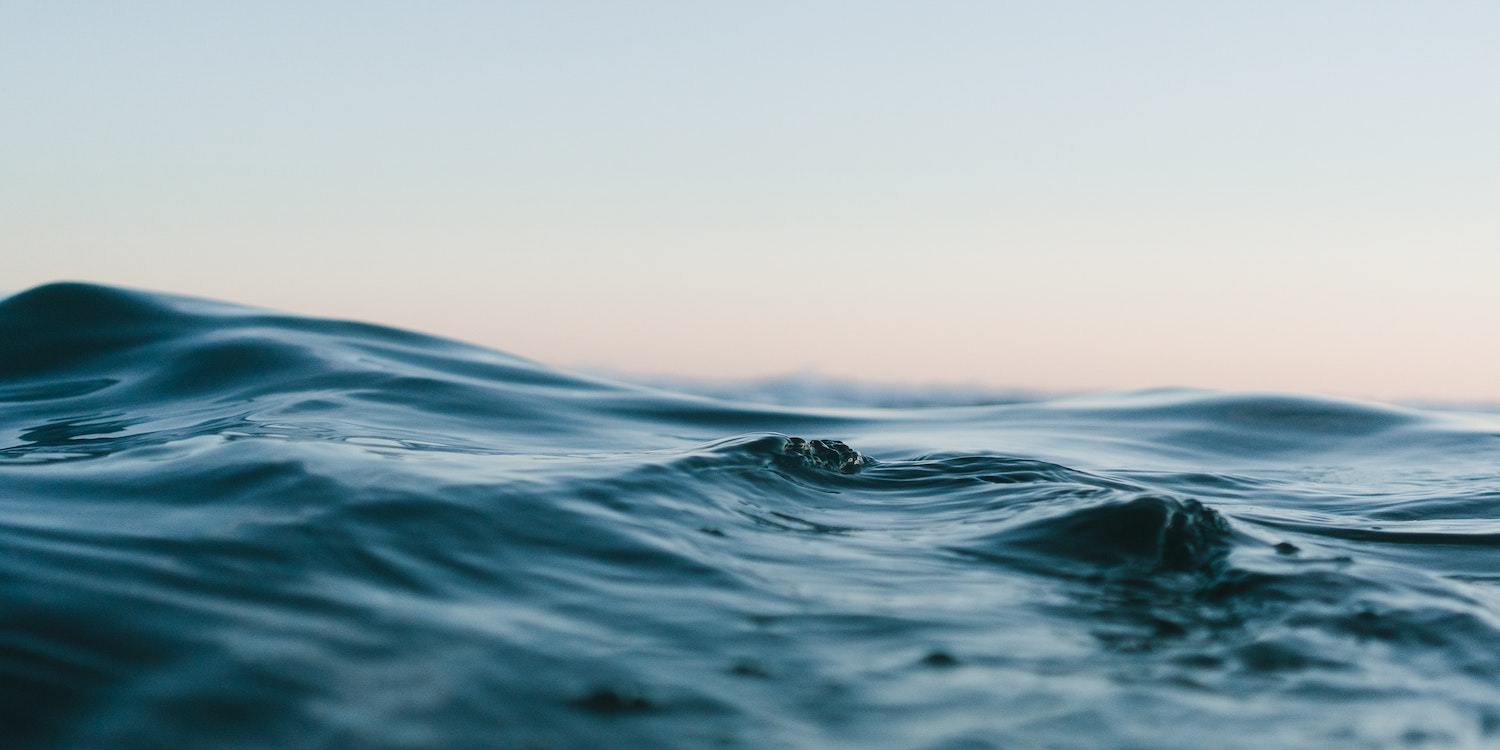Ever gazed at the horizon, wondering what hides beneath the sparkling surface?
These days, we have a pretty good idea. Remarkable underwater species, colorful coral reefs, and, well… plastic.
A few weeks ago, we dove beneath the surface to look closer at the effect of ghost nets. But there’s more than just discarded fishing lines drifting around the big blue – and today, we’re digging into another major contributor to plastic pollution.
Microplastics.
Yup – you’ve probably heard of this one. But what are microplastics, and why are they so bad for the environment? And most importantly – what can you do to avoid microplastic?
Let’s find out.
What Are Microplastics?
Microplastics are tiny plastic particles, typically defined as 5 millimeters in diameter and smaller. In 2016, it was estimated that microplastics stand for 11% of all plastic in the oceans – ouch. And sadly, the number is only growing.
See, you’ve probably heard that it takes a very long time for plastic to biodegrade. But the truth is, it never actually does – it simply breaks down into pieces so small we can’t see them anymore. Before they get that small, they break into microplastics.
So, all those big pieces of plastic drifting around the ocean? You guessed it – future microplastics.
But of course, plastic also enters the oceans already in micro size. This can be plastic designed that size, or tiny particles flaking off from products as they’re used, later flushing to the sea.
“In 2016, it was estimated that microplastics stand for 11% of all plastic in the oceans.”
And because microplastics vary in both shape, size, and type of plastic, they are very difficult to deal with. While some are lightweight and can float in the air, others are heavier and wash into waterways from our roads, or sinks. Many of them are too tiny to even be seen – but that doesn’t mean they can’t do damage.
Why Are Microplastics Bad for the Environment?

For starters, many fish and other sea-dwelling animals mistake microplastics for food. Once ingested, they cause clogged digestive organs, stunted growth and can even prompt changes in their natural behavior. As you can imagine, this doesn’t bode well.
Then there’s the fact that we eat seafood. Studies have recently shown that a quarter of the fish caught off the Californian coast contains plastic – all of it destined for our plates. And the effects plastic has on human health are still unknown.
But it’s not just the plastic itself that enters the food chain – microplastics actually concentrate and absorb other toxins in the oceans, too. Along with the plastic-polluted fish, these toxins end up on your dinner plate right next to those delicious potatoes.
But it’s not all bad news. See, with microplastics, there are actually quite a few things you can do on your own to help stop the pollution (Finally!).
So let’s get into it – here are five actionable steps you can take to avoid microplastics, reduce your plastic footprint, and help prevent the big blue from turning into a plastic soup.
1. Look Over Your Laundry Habits
Does polyester, acrylic or nylon ring a bell? Today, almost 60% of all clothes are made with synthetic fibers – which is just fashion-fancy for plastic. And as shocking as it might sound, it's estimated that about 35% of the microplastics in the ocean come from our laundry alone.
This is because when we wash our clothes, the friction causes tiny plastic fibers to flake off. And since they are too small for regular filtering systems to catch, these microplastics run straight into our waterways.
The best thing you can do, of course, is to avoid buying clothes with synthetic fibers. The next best thing is to buy second-hand – most microfibres flake off in the first eight washes. But what about the clothes you already own?
“About 35% of the microplastics in the ocean come from our laundry alone.”
Luckily, there are filters specifically designed to catch these tiny pests, like the Cora Ball. Mimicking the way that corals filter the oceans, it collects the microfibers into fuzz that you can see, and toss in the trash.
A few other helpful tips are washing full loads and picking faster and cooler cycles – a recent study saw this switch reduce the released microfibers by 30%. Yes, please!
Last, but not least – consider switching to an eco-friendly laundry detergent, such as Eco-Strips. As we’ll dig into below, there could be more than just chemicals lurking in the sparkly liquids.
2. Avoid Microbeads
Micro-what?
Let’s back up quickly – microbeads are a kind of microplastic found in cosmetic products like scrubs, soaps, and even some toothpastes, because of how efficient they are at exfoliating. Who doesn’t want smooth skin and shiny teeth, right?
Well, at less than 1 millimeter in diameter, these particles are really tiny – and the products that contain them, contain a lot. Studies have found that a single shower can release up to 100 000 microbeads (gulp), and yes – like other microplastics, they flush right into our seas.
The U.S banned the production and sales of plastic microbeads all the way back in 2015 (yay!), along with a bunch of other countries, such as the U.K, the Netherlands, and Australia. Sadly, it’s recently become clear that many companies still use them – while hiding behind greenwashed marketing.
Besides – most countries around the world still have no bans in place. And so with online shopping stretching far beyond national borders, you could easily come across a product or two containing the tiny pollutants and never know.
The only way to know for sure that you’re avoiding microbeads is to look at a product’s ingredients. To make this easy, Beat The Microbead has a fantastic list of ingredients to watch out for on their website. Even better, their mobile app can scan ingredient lists for you, letting you know which products to stay away from in seconds.
3. Ditch the Wheels
We all know that the car is one of the main ways you can cut down your carbon footprint. But did you know that tires also make up one of the biggest microplastic pollutants? The heavy friction on tires causes tiny bits of plastic to break off, and travel into lakes and rivers with the rain.
Many of us rely upon our cars, and seeking other transportation methods isn’t always possible. But making the effort to walk or take the train where you can is a great way to reduce your plastic footprint – doing your best is what counts.
And when you do drive, eco-driving techniques and avoiding sudden, harsh breaks can help to minimize the wear on your tires.
4. Reduce Single-Use Plastic
Yup – you knew this was coming. But over 50% of all plastic produced worldwide is single-use, and coincidentally, about 50% of the plastic in the ocean is also single-use. Ripped and discarded within seconds, never to be seen again – but left to drift the planet for hundreds of years.
Many of us have already come a long way on this one, which is fantastic. But if you’re wanting to cut back on single-use plastic even more, start by reflecting on your habits. There’s no point in buying reusables that you don’t need – so, what kind of single-use plastic do you actually use?
“About 50% of the plastic in the ocean is single-use plastic.”
Is it that snack bar you simply have to buy because you’re so hungry you can’t see straight? Or the plastic bags at the grocery store, because you keep forgetting your reusable ones? Think about how you can fix those specific issues.
And if you’re looking for reusables that last, we have a range of them in our shop to get you started.
5. Recycle and Buy Recycled
One major problem with oceanic plastic pollution is that not nearly enough gets recycled. In fact, only about 9% of the plastic produced is put into recycling bins.
So, what happens to the remaining 91%? It ends up in the oceans or sits in landfills, where they slowly break down into – you guessed it – microplastics.
But even more concerning, is that just roughly a third of those 9% actually gets recycled. This is due to a range of issues – one of them being that there isn’t enough return on investment for using recycled materials, and so the process comes to a stand-still.
This is where we can make a difference, by buying products that contain recycled materials over those that don’t. Boosting the demand for recycled products can help to kickstart the recycling industry, and reduce the amount of new plastic produced.
And of course – recycling our own trash so it doesn’t end up in the ocean.
And there you are! Five actionable and easy ways you can reduce your plastic footprint, and help to keep plastic out of our seas. Did any of these facts surprise you? Please share your thoughts in the comments below!
Psst… Itching to learn more about the oceans? Check out our blog on abandoned fishing nets next.






